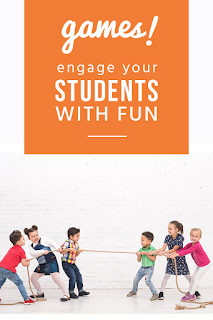Collaborative writing practices are necessary and common in today’s workplaces. This has become increasingly more important as collaborative writing tools and environments continue to evolve and make it easier for more people to simultaneously construct text with others. Users are also expected to offer suggestions and corrections for their peers’ work. Thus, it is important for learners to develop skills that support and promote collaboration in a variety of ways.
Collaborative writing activities have been popular in ESL and EFL classrooms for many years. Certainly, it has become common to have students work together in groups in face-to-face contexts while they collectively brainstorm, plan, and begin writing individual essays. This kind of activity can take on many different forms, particularly when it is enhanced through the use of technology.
Collaborative Writing Tool Types and Benefits
There have been many interesting opportunities for creating meaningful collaborative learning experiences through various forms of technology. Various tools and environments allow learners and instructors to write on the same document, or in a shared environment, at the same time. Each of these tools function in slightly different ways, allowing users to demonstrate slightly different forms of engagement.
Writers who have difficulty coming up with ideas or maintaining a steady flow can benefit from this simultaneous, collaborative writing experience. They can follow the writing of others in the group or class to gain additional insights into the topic. This can help them think of potential contributions that they might offer. They can also offer suggestions to their partners for adjustments to their own writing. This kind of activity can help to raise awareness of numerous aspects of the writing process (such as drafting, revising, and incorporating feedback).
Collaborative writing practice can also help learners understand important concepts, such as identifying purpose and understandings audience awareness. These activities can also promote more extensive writing practice, which is often recognized as important for improving writing fluency, accuracy, and complexity.
Collaborative Writing in ESL/EFL
At very beginning levels, English language learners can be encouraged to collaboratively construct brief texts with visual support. The text and images can be provided by the instructor at the most basic level or generated by learners to allow for more individualization. These learners can be expected to produce such things as memes, picture stories, and poems.
More advanced learners can be expected to produce texts that tend to be more associated with academic scholarship, such as essays, fiction, or research reports. They can also be expected to create more advanced versions of digital products because it is important to recognize that not all collaborative writing activities result in a final written product. Often, the writing activity is just one step in a process of creativity and linguistic negotiation that can result in a number of different final media products. These products tend to involve mediums or genres that are more familiar and comfortable landscapes for our 21st-century learners, including a variety of digital products, such as movies, games, comic books, news reports, various social media contributions, and virtually any other form of media that is of interest to your group of learners.
Introducing Collaborative Writing to English Language Learners
There are many ways that you can introduce collaborative writing into almost any ESL or EFL level or context of instruction. Students will need guidance throughout these activities in order to understand how to interact with one another, as well as how to provide and respond to peer feedback. I highly recommend the readings listed in the References at the end of this entry. I am sure you will also find this TESOL-sponsored video, “SLWIS Feedback,” of Dr. Dana Ferris leading a discussion about the role of feedback to be helpful.
Here are a few suggested activities that can help you introduce collaborative writing into almost any ESL or EFL level of instruction. Some of the most popular writing tools and activities include the following:
Tools
Activities
Resources
- Game design (This link is for teacher preparation, but the concepts transfer perfectly for ESL and EFL learners as well).
- Making Movies (This is a link to an ESL magazine column I wrote years ago with some basic tips for movie making. The writing aspect is no different from any other collaborative practice)
How have you used collaborative writing with your English learners, and what tools do you find most useful? Please share in the comments box, below.
References
Bitchener, J., & Storch, N. (2016). Written corrective feedback for L2 development. Multilingual Matters.
Ferris, D. R. (2012). Technology and corrective feedback for L2 writers: Principles, practices, and problems. In G. Kessler, A. Oskoz, & I. Elola (Eds.), Technology across writing contexts and tasks (pp. 7–29). San Marcos, TX: CALICO Monograph Series.
Hedgcock, J., & Ferris, D. R. (2013). Teaching ESL composition: Purpose, process, and practice. Routledge.
Kessler, G. (2017). Second language writing, new media, and co-construction pedagogies. In S. Thorne & S. May (Eds.), Encyclopedia of Language and Education. Springer.
Kessler, G., Bikowski, D, & Boggs, J. (2012). Collaborative Writing Among Second Language Learners in Academic Web-Based Projects. Language Learning & Technology, 16(1), 91–109. Retrieved from https://scholarspace.manoa.hawaii.edu/bitstream/10125/44276/1/16_01_kesslerbikowskiboggs.pdf
Kessler, G., & Bikowski, D. (2010). Developing collaborative autonomous learning abilities in computer mediated language learning: Attention to meaning among students in wiki space. Computer Assisted Language Learning, 23(1), 41–58. Retrieved from https://www.tandfonline.com/eprint/T8DUBCpjHMpZ8jtDMwQM/full
 Multiplying by 8 – Multiplication Math Games and Lesson Plans
Multiplying by 8 – Multiplication Math Games and Lesson Plans














